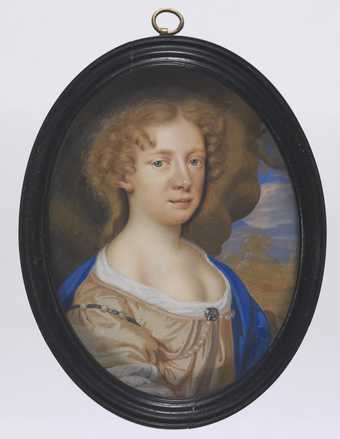
Charles Beale
Mary Beale
(1679)
Tate
Miniatures range from about three centimetres in height to as much as twenty-five centimetres and are painted in watercolour or gouache on vellum, enamel, ivory or, often, a playing card.
In the West miniature painting emerged at the time of the Renaissance from the medieval practice of illuminating (decorating and illustrating) manuscript books. The heyday of the miniature was the sixteenth and seventeenth centuries.
They were often enclosed in jewelled cases and worn as personal adornment and as a sign of allegiance, either political or romantic, to the person depicted.
In Britain miniature painting flourished at the court of Queen Elizabeth I (see Elizabethan) whose court painter Nicholas Hilliard was one of the greatest of all miniature painters. He was succeeded by his pupil and rival Isaac Oliver. The Victoria and Albert Museum in London, UK, holds the national collection of portrait miniatures, and miniatures can also be seen in the Scottish National Portrait Gallery and the Wallace Collection.
More generally, the term miniature or in miniature is applied to any work of art produced in a size much smaller than the normal size for that type of work.
